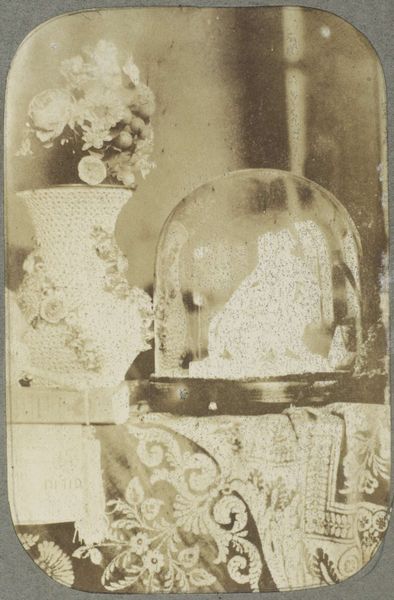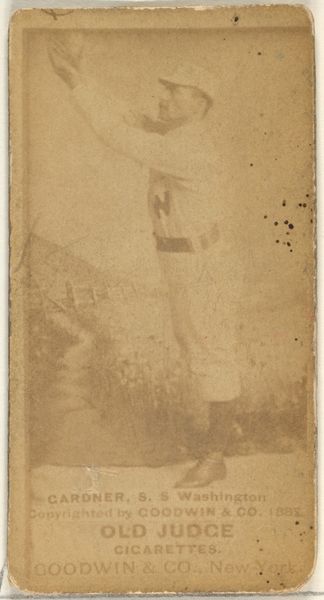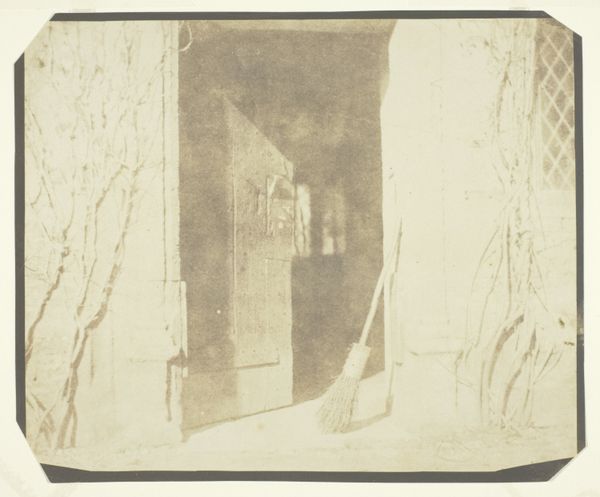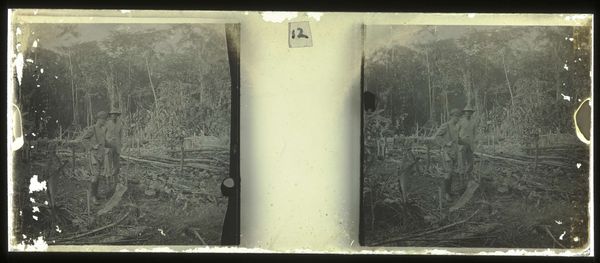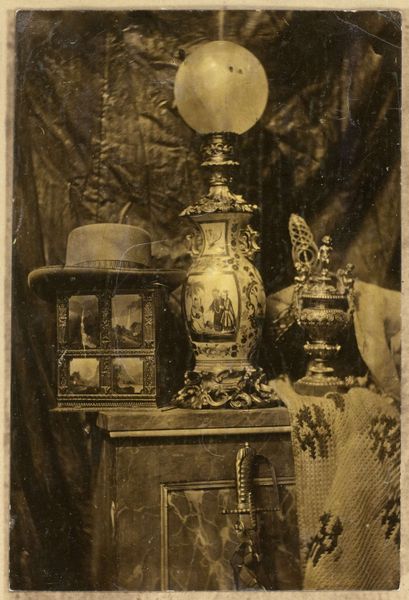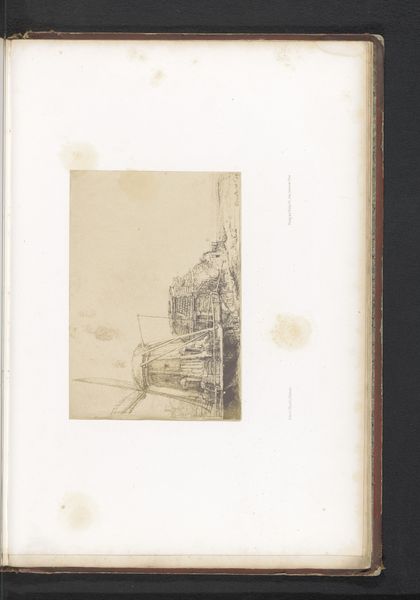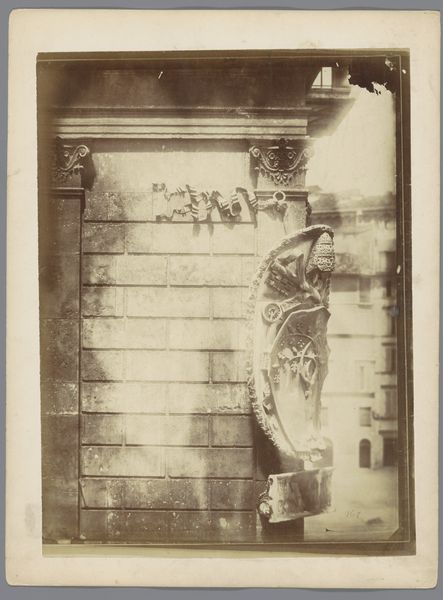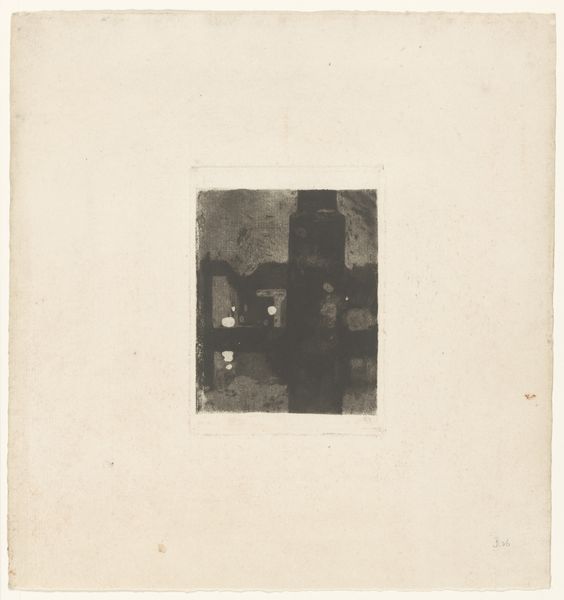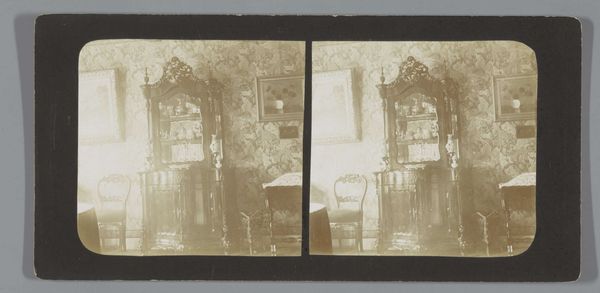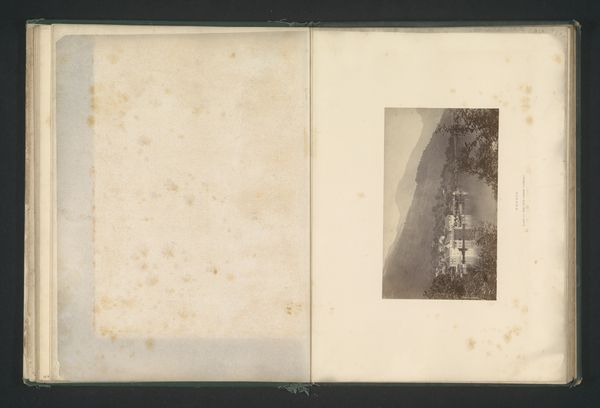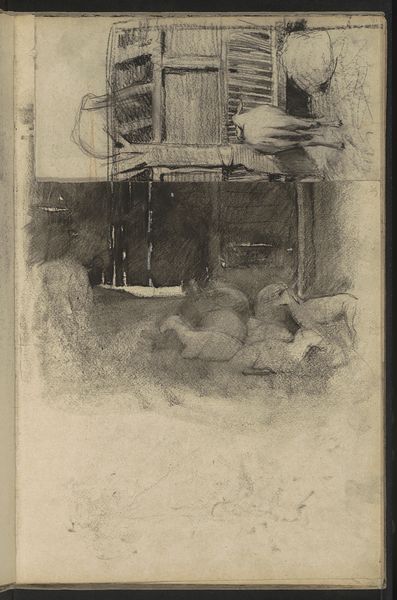
Foto met daarop een portret van een meisje ingelijst op het bureau after 1845
0:00
0:00
photography, albumen-print
#
portrait
#
photography
#
albumen-print
Dimensions: height 94 mm, width 81 mm
Copyright: Rijks Museum: Open Domain
Curator: Looking at this softly focused image, we have “Foto met daarop een portret van een meisje ingelijst op het bureau” which translates to “Photo with a portrait of a girl framed on the desk,” made after 1845 by Eduard Isaac Asser. It’s an albumen print, so the texture has that distinctive sheen. What's your first impression? Editor: I find it incredibly intimate, almost voyeuristic, peering into a private space and time. There's a faded melancholy about it. Like a ghost story captured in sepia tones. Curator: Exactly! The way Asser has presented it—a photograph of a photograph, framed, sitting on what looks like a stack of papers—emphasizes the layered nature of memory. We're not seeing the girl directly, but a representation of her, a cherished image. Editor: The framing is really clever, adding depth and context. Portraits signify a desire to immortalize or freeze a moment. Setting it on the desk evokes daily life, someone living with this image of a loved one constantly present. What kind of symbols do you think emerge from this layering? Curator: I see the photograph on the desk almost as an altar to memory. The desk, overflowing with what looks like documents and notebooks, it hints at a life consumed by work, perhaps scholarly or professional pursuits, punctuated by this singular image of… longing? It makes me consider what images mean when we give them prominence in our living spaces. Editor: The image, though a personal memento, resonates on a much larger scale. Framed portraits possess universal themes of longing, memory, and remembrance. That subtle aging effect somehow amplifies this sentiment; even at the dawn of photography it all feels incredibly prescient. Curator: Perhaps it's about how all images eventually transform from crisp documents to faded memories. Asser seems keenly aware that he isn't simply making a record, but a vessel filled with something fleeting. A melancholic poem composed through photography, you could say. Editor: It's a haunting piece, beautifully executed. One image, commenting on itself—time, memory and love distilled into a single frame. Curator: A potent reminder, captured at the infancy of photography. And how fitting it rests there in the Rijksmuseum.
Comments
No comments
Be the first to comment and join the conversation on the ultimate creative platform.
